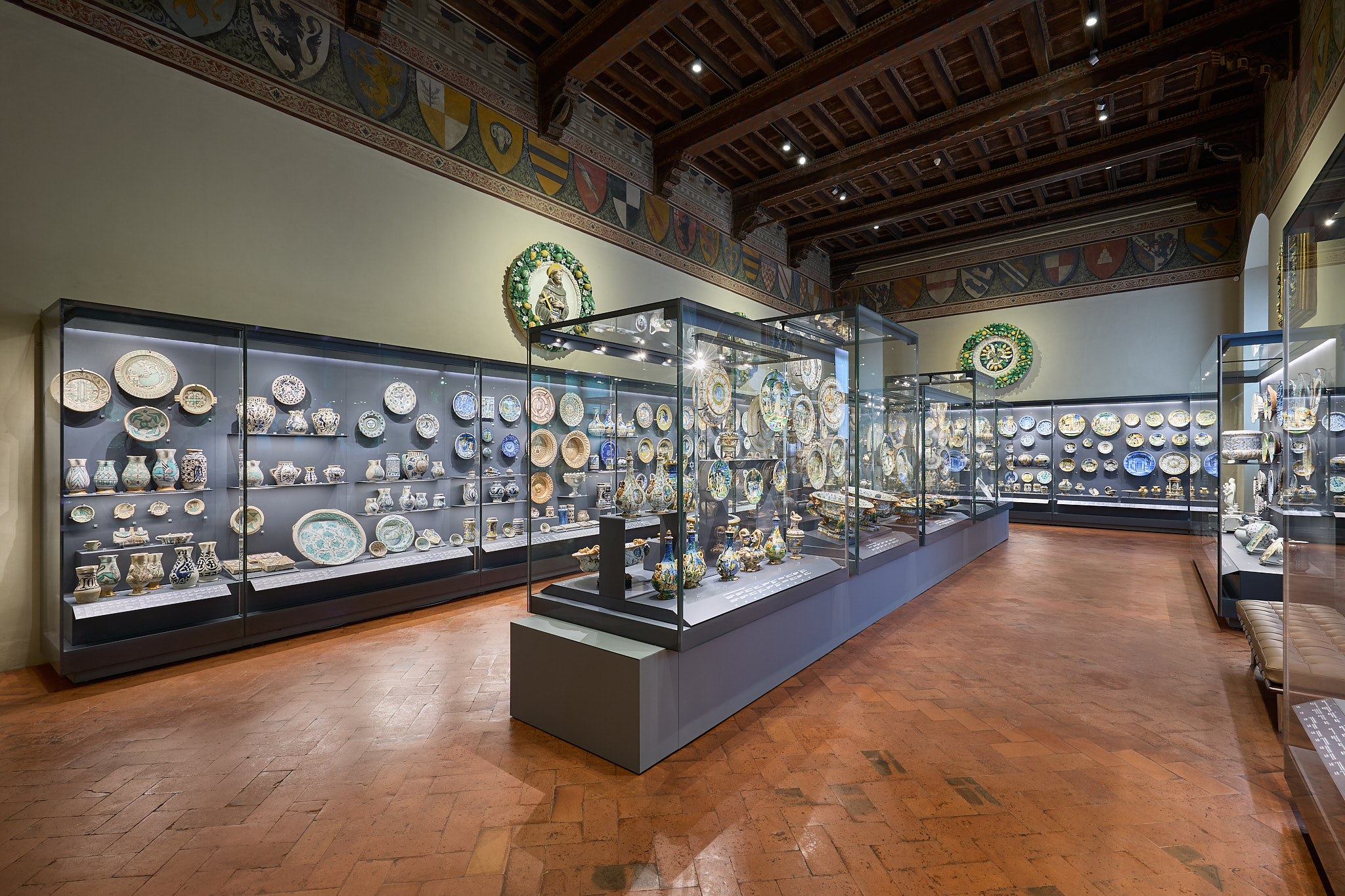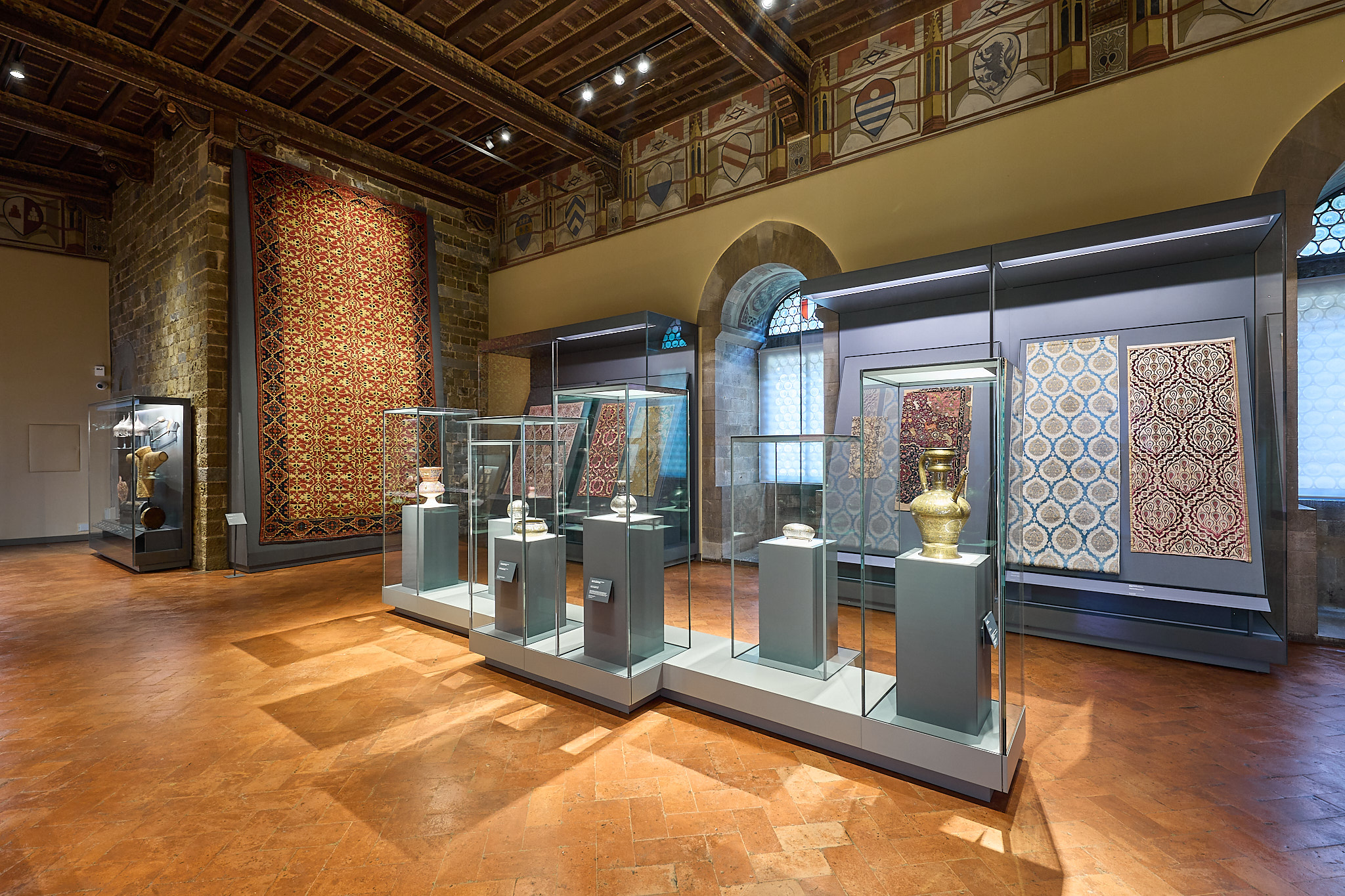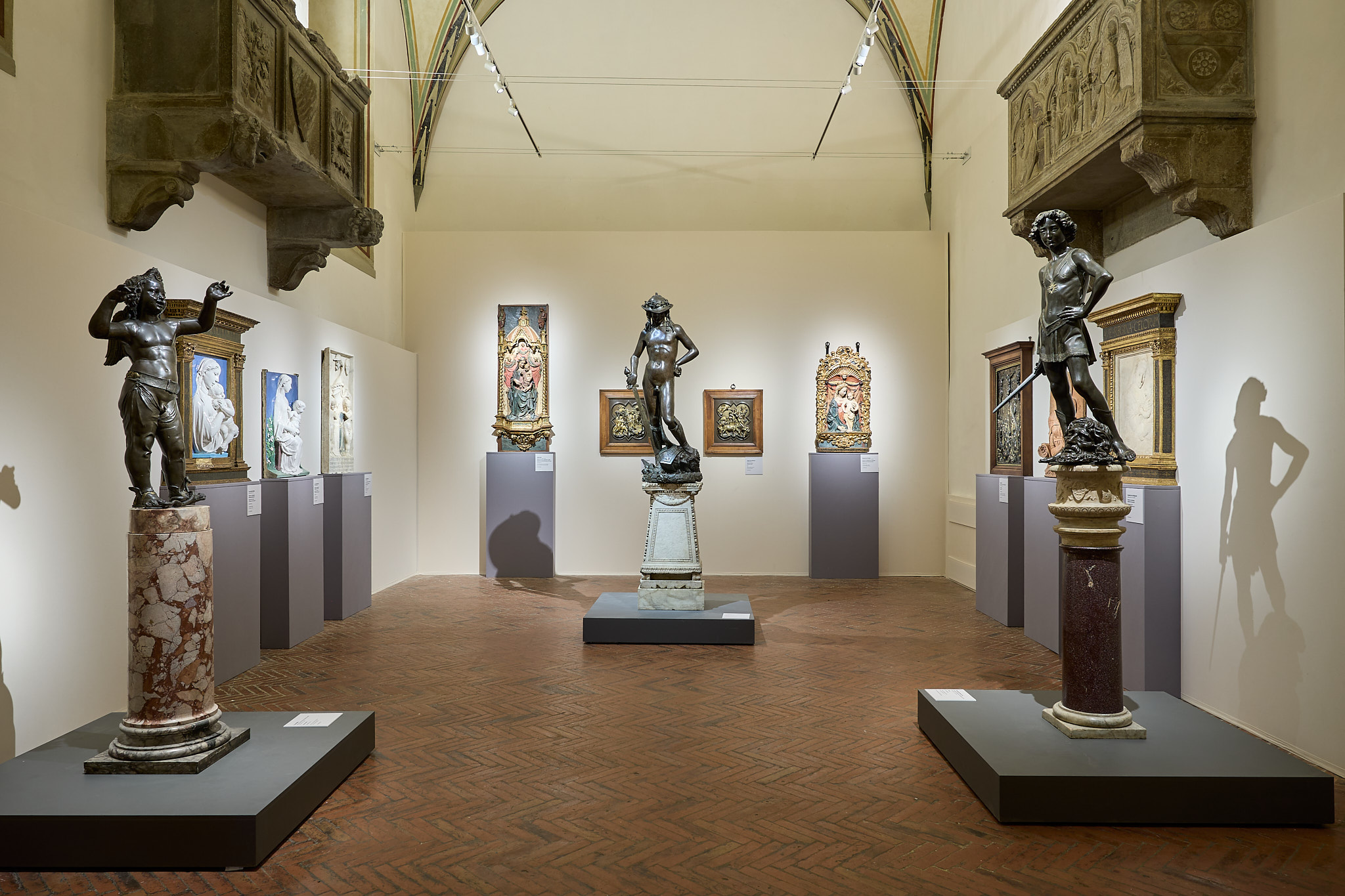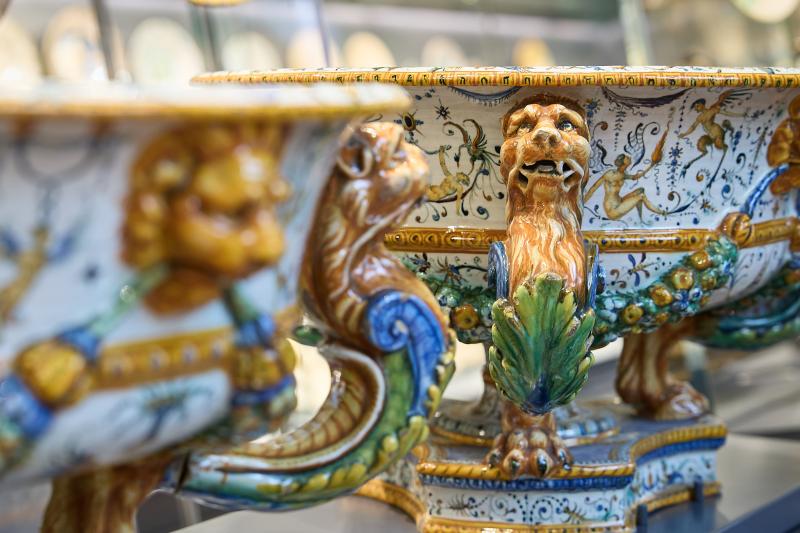Florence’s Bargello Museum reopened its Maiolica Room and Islamic Hall to the public earlier this week after a nine-month reconfiguration.
The Maiolica Room, curated by Marino Marini, showcases a gorgeous lineup of over 400 ceramic objects of the approximately 1,000 stored in the museum’s archives, while the Islamic Hall, curated by archaeological and cultural scholars Giovanni Curatola and Marco Spallanzani, contains over 100 works of Islamic art, metals, ivories, ceramics, textiles and carpets.
Local architecture firm Guicciardini & Magni oversaw the project, which was part of ongoing updates to institutions in the Bargello Museums group. Funds totaling €2.2 million were provided through the Italian Ministry of Culture’s “Grandi Progetti Beni Culturali” strategic plan. The changes to both of the first-floor rooms focused primarily on improvements to the visitor route, closer management of the effects of the microclimate on the exhibits, and enhancement of their conservation techniques.
The celebrated collection of Italian Renaissance sculpture is what first-time visitors tend to zero in on at the Bargello, but the museum’s decorative objects and furnishings deserve closer examination — especially after these new upgrades. Here’s what to look out for on your next visit.
In the Maiolica Room

Brought to Italy via Moorish Spain, maiolica — named for Majorca, the Spanish island and port through which cargos of ceramics arrived to Italy — is a traditional way of tin-glazing pottery over soft earthenware in vibrant color.
The craft gained traction throughout the 14th and 15th centuries, when human portraits on plates, bowls, and cups became popular. By the 16th century, maiolica methods were being used to make apothecary jars (albarelli) often put to use in pharmacies to store herbs, drugs, syrups, powders and pills. Today, you’re still likely to spot maiolica vessels being used in some of the historic pharmacies around Italy.
The Bargello’s Maiolica Room highlights include items made by Urbino potters and adorned with figures from mythology, Greek and Roman history, sacred writings and ancient texts (including Ovid’s Metamorphoses, Julius Caesar’s De bello Gallico, and the Bible).
Of particular note are basins and platters produced by the Urbino workshops of the Fontana and Patanazzi families. Decorated with the deeds of Caesar, the items replicate famous serving ware originally designed by Taddeo Zuccari at the request of Guidobaldo II, Duke of Urbino, as a gift for the King of Spain, Philip II.
The walls chronologically highlight pieces from different areas of Italy produced from the 13th to the 20th centuries. Standouts include three famous reliefs by Luca della Robbia, an important Renaissance figure widely credited as the inventor of glazed terracotta. Della Robbia became enamored with clay and pioneered a uniquely Florentine form of maiolica. His work is characterized by white glazes, soft texture and highly polished surfaces.
In the Islamic Hall

Though the Islamic Hall has some of its own ceramics (mostly in the form of wall tiles), it’s particularly heavy on metals, ivories and textiles; one of the museum’s most significant recent acquisitions, purchased by the Italian state in 2022, is a pair of rare 16th-century Mamluk Egyptian rugs that once covered the floors of Villa Medicea at Camugliano in the Pisa province. They are the only known surviving “twin” rugs of this type.
It’s metals, though, that make up the bulk of this collection, which is one of the largest of its kind in Italy. With roots in the 15th-century interests of Piero dei Medici and Lorenzo the Magnificent, the core of the collection was expanded upon in the 19th century through donations by two important antiquarians, the French painter Louis Carrand (1827-1888) and the Italian baron Giulio Franchetti (1840-1909). A 14th-century jug originating from Egypt or Syria, a 13th-century vase from Mosul, Syria, and a 14th-century spherical perfume burner of unknown origin are three of the must-sees.
The bigger picture at the Bargello

The extensive intervention on the two rooms was part of long-term work conducted throughout the five branches of the Bargello Museums group, which comprises several monumental buildings in Florence, including the Medici Chapels at San Lorenzo, Orsanmichele, Palazzo Davanzati and Casa Martelli.
The group’s core museum and namesake was inaugurated in 1865, and occupies Florence’s oldest public building — a fortified structure dating to 1255 that has served as a medieval-era town hall, a police station and prison. Today, the Bargello houses many of Italy’s sculptural masterpieces by artists such as Michelangelo, Cellini, il Verrocchio, Donatello and Giambologna. Donatello’s world famous David, the first bronze life-size, nude statue in the round made since antiquity, and Giambologna’s oft-replicated Flying Mercury, are the stars of the show.
Renovation work on the Bargello complex is ongoing and the museum’s monumental Salone di Donatello recently closed to the public through October 2024. But a curated selection of 13 sculptural masterpieces by the artist and some of his contemporaries has been moved to the exhibition room on the ground floor. It’s a unique chance to get an abbreviated yet high-impact look at some of the Bargello’s icons — pairing nicely with a visit more focused on the lesser-known and newly upgraded treasures of the Maiolica Room and Islamic Hall.
If you go
Museo Nazionale del Bargello
Via del Proconsolo 4, Florence
Website





